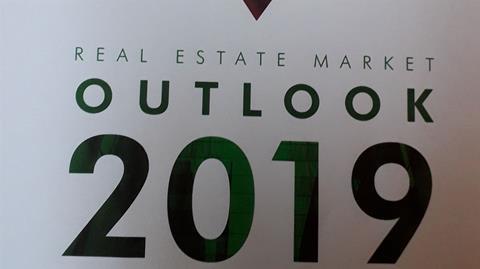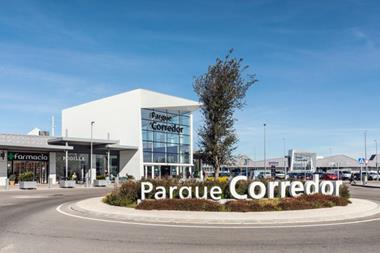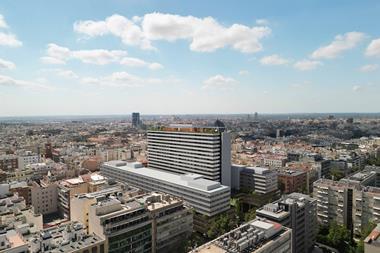CBRE paints an upbeat but realistic picture of 2019 and 2020 for Europe’s real estate markets in its EMEA research paper.

CBRE believes 2019 will be a healthy year for Europe's investment market even though volumes might dip from 2017 and 2018 levels.
The firm’s Real Estate Market Outlook 2019 research report calls this a mature stage of the cycle and predicts more ultra large ‘platform deals’ to occur following Unibail-Westfield’s tie up, Colonial’s takeover of Axiare in Spain, and Blackstone taking over Hispania and the residential arm of Testa, and another example – Vonovia’s takeover of Buwog in Germany.
CBRE calls Europe the most globalised region in terms of capital flows given around 45% of all acquisitions are by foreign buyers. While cross-border buyers are still from Europe, Asian capital has been continuing to grow. However, in common with other companies presenting Outlooks, CBRE is wary of certain downside factors despite the economic scenarios looking positive. ‘Property investors should be particularly alert to the prospect of a sharper-than-expected rise in interest rates,’ it cites.
CBRE also says stock market pricing provides one indication of the market’s interpretation. Here, despite a recent recovery, Europe REIT prices were down by 6.5% between the end of July and mid-November, which is a steeper fall than the 5% drop in the (all sector) Euro STOXX index. While not anticipating a sharp correction in direct market values, recent movements in REIT prices do capture the possible effect of the particular risks facing the real estate sector, the company warns.
After more than three years of unprecedented financial stimulus, the European Central Bank will phase out QE from January 2019, possibly paving the way for a rise in interest rates towards the end of 2019. However, it also believes it unlikely that interest rates will return to the levels witnessed before the Global Financial Crisis of 2008.
While a rise in interest rates might present a new challenge, ongoing limited availability of product is also a potential brake on the market. That said, it sees private equity firms as a group that could release assets, as well as property development and investors’ rotation policies helping. ‘Despite keen pricing, private equity firms have still been active buyers in recent years. One key strategy has been acquiring platforms of scale, often through delisting of publicly traded companies or by buying non-performing loans. While exit strategies may vary, it is likely that this will result in spinoffs for the direct investment market and some of the underlying assets will be put on the market over the next 24 months.’
Overall, looking at investment turnover, CBRE says ‘it will be challenging’ to match the levels recorded in the last two years.
‘Most markets are performing at near-record high levels which leaves little room for additional growth. Considering the increased investor perception of global risks and the turning point in the ECB’s monetary policy, we expect a more cautious attitude from investors going into 2019. This will still mean a strong investment market by historical standards, but a moderate decline in turnover levels compared to 2018.’
When it comes to sectors, CBRE says:
Offices: Slower growth in leasing levels, but supply-side constraints will support positive real rental growth in most major office markets in 2019
Retail: Investors becoming more selective in their choice of retail assets. Experiential retail and local convenience are defensive parts of the sector. Few markets expected to see rental growth in 2019
Industrial and Logistics: Sector supported by combination of economic growth and expansion of online sales. Rental growth to be concentrated in supply-constrained locations. Increasing specialisation in the city logistics market
Residential: Prospects remain broadly positive. Investors to continue to diversify across markets, and new types of investor to enter the sector. Local regulatory risks should be closely assessed
Hotels: Growing demand for overnight accommodation will support a rise in average room rates and boost operator profitability. Supply growth likely in the economy and midscale tiers of the market
Data centres: Expect 2019 to be a further year of strong take-up in the core markets. New occupiers entering the market, and growing competition between US and European providers will fuel expansion beyond traditional markets
Alternatives: More investors engaging with alternatives at pan-European level in 2019. This will drive innovation in this sector, and the emergence of new financial structures
Real Estate Tech: Further opportunities for investors and occupiers to refine their tech and innovation strategies in 2019. Focus will be on delivery of real estate technology at an asset-specific level










